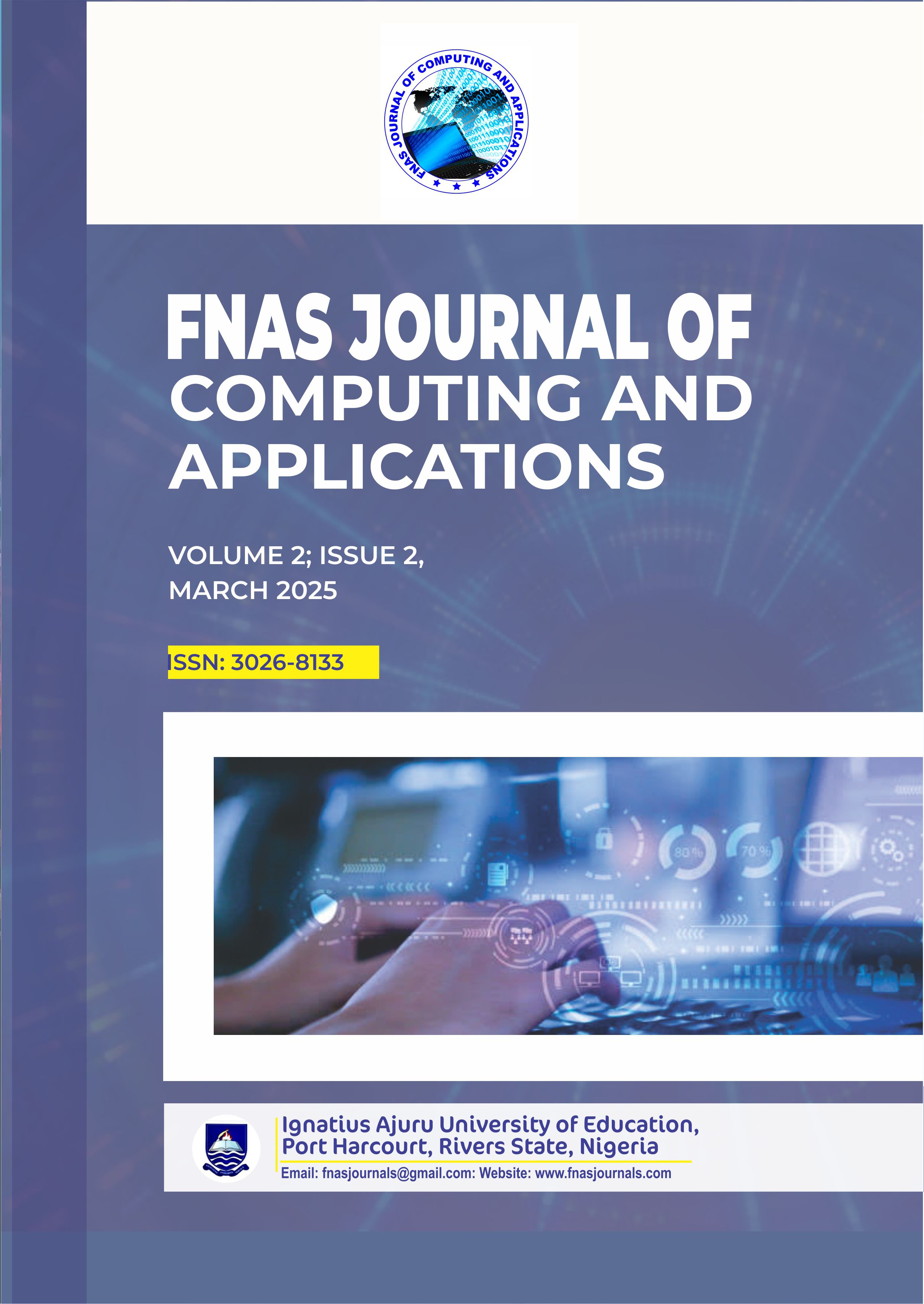Efficacy of a Remote Home-Based Security System on Residential Estate Safety in Minna Metropolis, Niger State, Nigeria
Keywords:
Efficacy, Remote Home, Smart Security, Residential Estates, SafetyAbstract
The need to secure home facilities and equipment against theft and robbery in contemporary society has been acknowledged by environmental and security experts. One way of achieving safety within residential estates is the use and deployment of smart home security device that monitor and report, security breaches. This study was aimed at determining the efficacy of a smart home security system on the safety of residential estates in Minna Metropolis. To guide the study, four (4) research questions were raised from the objective of the study. The study consisted of M. I. Wushishi, Talba and Oduoye estates all located within Minna with an estimated population of 48,450 residents. The sample for the study is made up of 30 households randomly selected within three (3) estates in Minna. The design for the study was a survey using structured interview and a 4-point Likert scale questionnaire for data collection. The instruments were subjected to face, content and construct validation by two environmental experts. The reliability coefficient values of the instruments were 0.84 and 0.79 for interview and questionnaires respectively. The instrument was administered on the respondents and retrieved after one week. The opinion responses were coded and analyzed using the mean and standard deviation statistics. The finding shows that smart home security device was highly effective in curbing security breaches an d vandalization of properties within the estates. The study also identified some constraints implementation gap on the use of smart security device to include network failure, power supply, software stagnation and harsh weather condition among others and suggest strategies for addressing them. The paper recommends the inclusion of fingerprint authentication on the main user interface to block falsification of identity in addition to the use of lithium coin cell battery to solve the challenge of power outage within the estates.
References
Abdullahi, A. (2020). Design and Integration of Alarm system for scaring intruders in residential estate. Journal of Home Management and Urban Planning, 3(2), 89 – 107
Adebiyi, L. (2019). An evaluation of home-based security systems for planning and implementing security-based policies in Nigeria. Journal of Contemporary Studies in Environmental Technology, 6(3), 201 – 248
Godspower, O. (2022). Managing home resources for optimal safety. The use of digital technology. International Journal of Scientific Investigation and Management, 5(2), 78 – 99
Joseph, E. (2022). Cloud security issues based on people, process and technology model. West African Journal of Home Management and Urbanization, 2(4), 79 – 109
Shehu, B. (2019). Identifying constraints in the use of digital home security system for maximum safety. International Journal of Science, Engineering and Quantity Surveying, 5(2), 133 – 149
Suleiman, B. (2020). Advancing the cause of home protection and safety in Nigeria. A review of digital surveillance techniques. Journal of Information Technology, 3(3) 149 – 172
Tobi, E. O. (2022). Assessment and evaluation of home based security system using Arduino mega AT. International Journal of Science and Technology, 3(4), 114 – 132.








